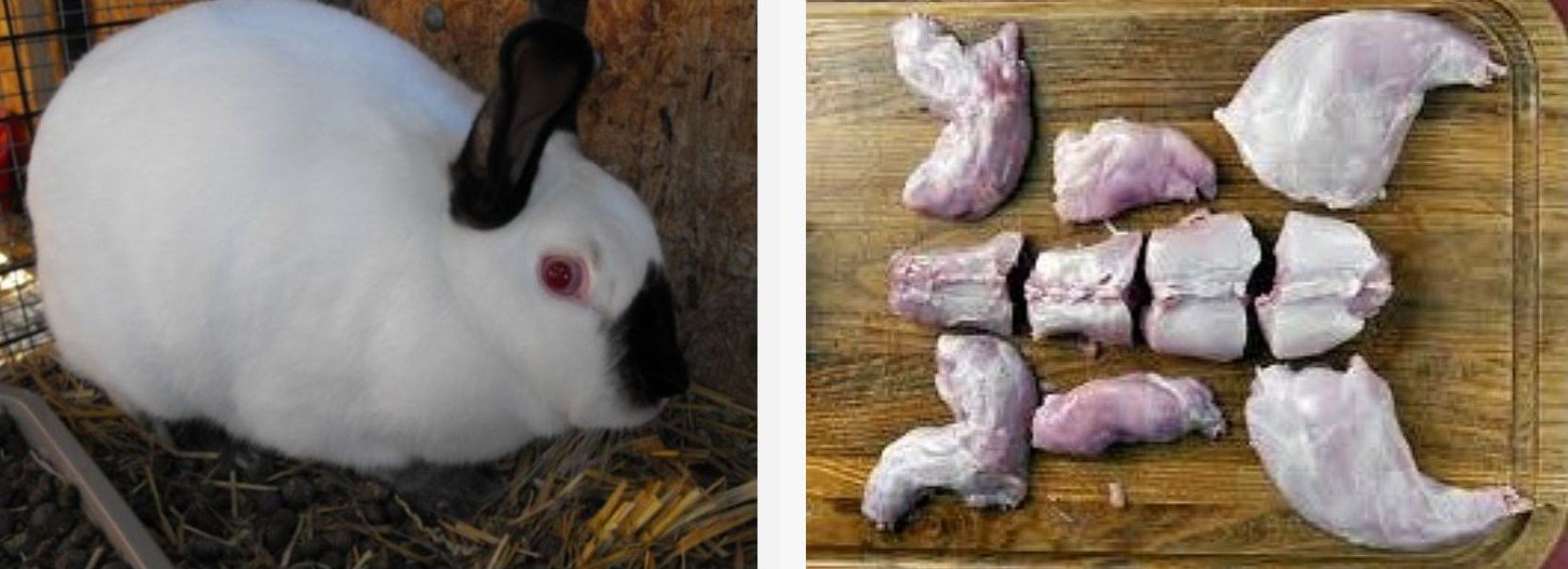rabbit - intro
I have raised rabbits for our personal use for 2 years. It isn’t very a very difficult thing to do. They are generally very quiet and not demanding at all. Rabbits are content with a small space and regular food and water. Best of all for the homesteader, they breed like rabbits, grow like cabbages and are cheap in upkeep. Rabbits have the lowest feed cost to meat production ratio of all domestic animals.
The hardest part of raising rabbits for me was killing day. That was always a bit traumatic for me. The skinning and dressing out afterwards was a just chore, and a full freezer my reward.
What raising rabbits did for me:
It restored the connection between the living animal and the need to kill to get them as food on the table. I hated it, and yet it had to be done.
Too many city-raised people have been sheltered all their lives from that fundamental circle of life and death. Killing and processing your own food brings a respect for the animals that feed you.
 Pic1: rabbit before
Pic1: rabbit beforePic2: rabbit after
Rabbit meat is good for you. (source)
- It is one of the best white meats available on the market today.
- The meat has a high percentage of easily digestible protein.
- It contains the least amount of fat among all the other available meats.
- Rabbit meat contains less calorie value than other meats.
- Rabbit meat is almost cholesterol free and therefore heart patient friendly.
- The sodium content of rabbit meat is comparatively less than other meats.
- The calcium and phosphorus contents of this meat are more than any other meats.
- There is more edible meat on the carcass than even a chicken.
- Rabbit meat does not have a strong flavor and is comparable to chicken but not identical.
- Rabbits can produce 6 lbs. of meat on the same feed and water as the cow will produce 1 lb.
 Pic3: roast/fry
Pic3: roast/fryPic4: pot roast/stew
Pic5: soup/boil
Rabbit x3
2016-09-28
Just as with other meats, I use three main cooking methods for rabbit: roast, stew or pot roast, and soup.
- Dry-roasting a fryer rabbit in some oil can make it taste amazingly like chicken by using similar spices. To be tender enough, the rabbit has to be quite young = up to 8-12 wks., 2-4 lbs. (Pic3)
- Stew or pot roast is for slightly older rabbits, up to 6 months. (Pic4)
- Soup is for adult rabbits over 6 months. Those are best boiled a longer time to tenderize them. (Pic5)
See the respective recipes for more details.
 Pic3: roast/fry
Pic3: roast/fryPic4: braise/stew
Pic5: soup/boil
Same-level links
recipe page links
- rabbits - intro
- dry-cooked
- oven-baked
- moist-cooked
- pot roast
- stew
- canned rabbit